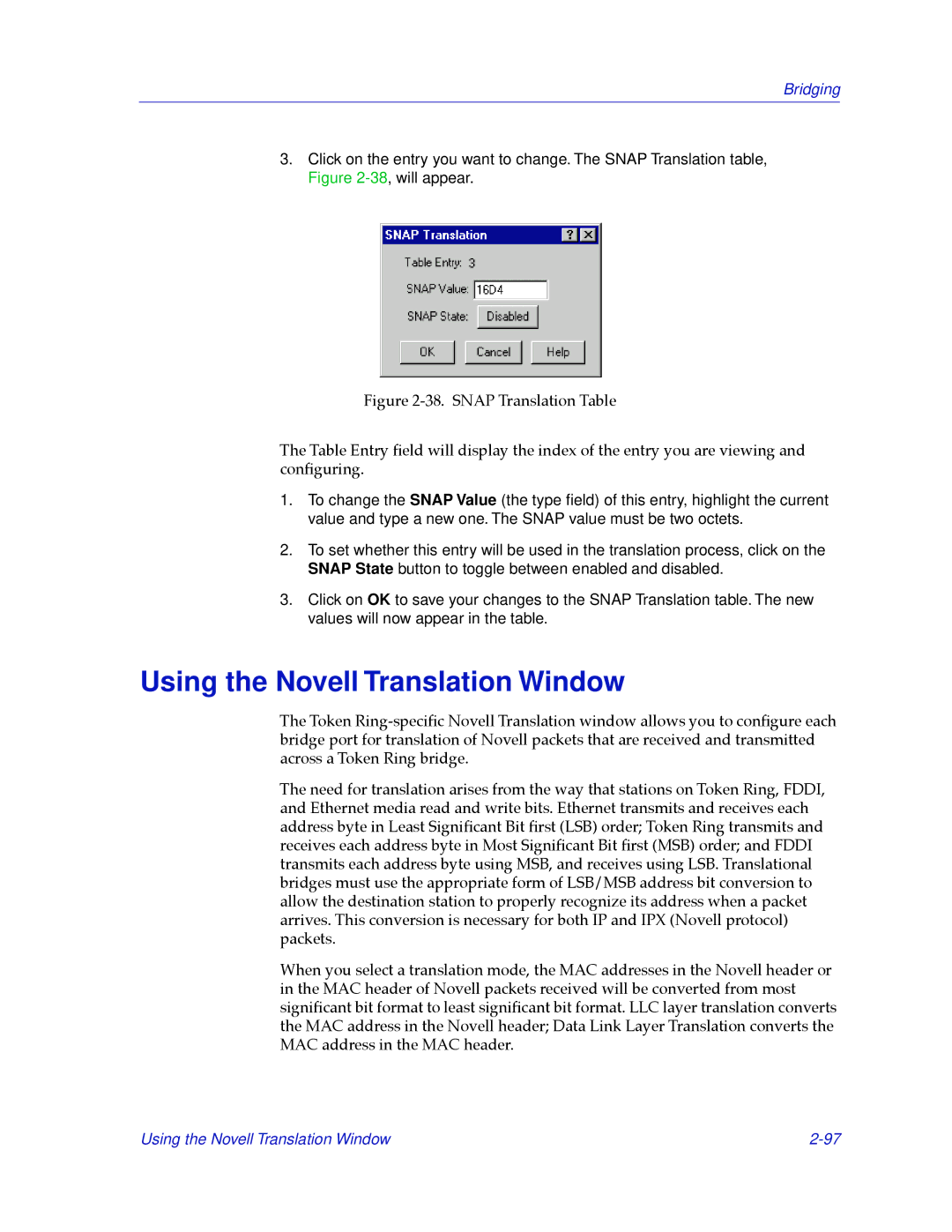
Bridging
3.Click on the entry you want to change. The SNAP Translation table, Figure
Figure 2-38. SNAP Translation Table
The Table Entry Þeld will display the index of the entry you are viewing and conÞguring.
1.To change the SNAP Value (the type field) of this entry, highlight the current value and type a new one. The SNAP value must be two octets.
2.To set whether this entry will be used in the translation process, click on the SNAP State button to toggle between enabled and disabled.
3.Click on OK to save your changes to the SNAP Translation table. The new values will now appear in the table.
Using the Novell Translation Window
The Token
The need for translation arises from the way that stations on Token Ring, FDDI, and Ethernet media read and write bits. Ethernet transmits and receives each address byte in Least SigniÞcant Bit Þrst (LSB) order; Token Ring transmits and receives each address byte in Most SigniÞcant Bit Þrst (MSB) order; and FDDI transmits each address byte using MSB, and receives using LSB. Translational bridges must use the appropriate form of LSB/MSB address bit conversion to allow the destination station to properly recognize its address when a packet arrives. This conversion is necessary for both IP and IPX (Novell protocol) packets.
When you select a translation mode, the MAC addresses in the Novell header or in the MAC header of Novell packets received will be converted from most signiÞcant bit format to least signiÞcant bit format. LLC layer translation converts the MAC address in the Novell header; Data Link Layer Translation converts the MAC address in the MAC header.
Using the Novell Translation Window |
